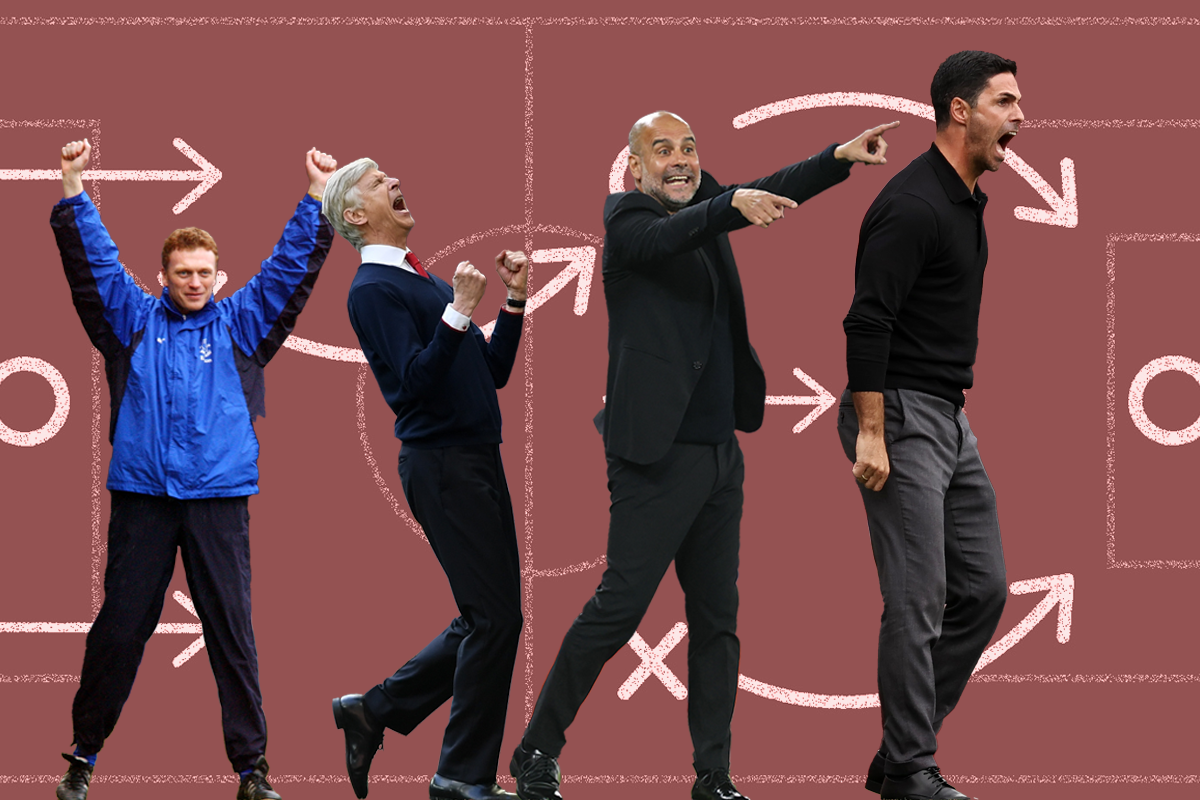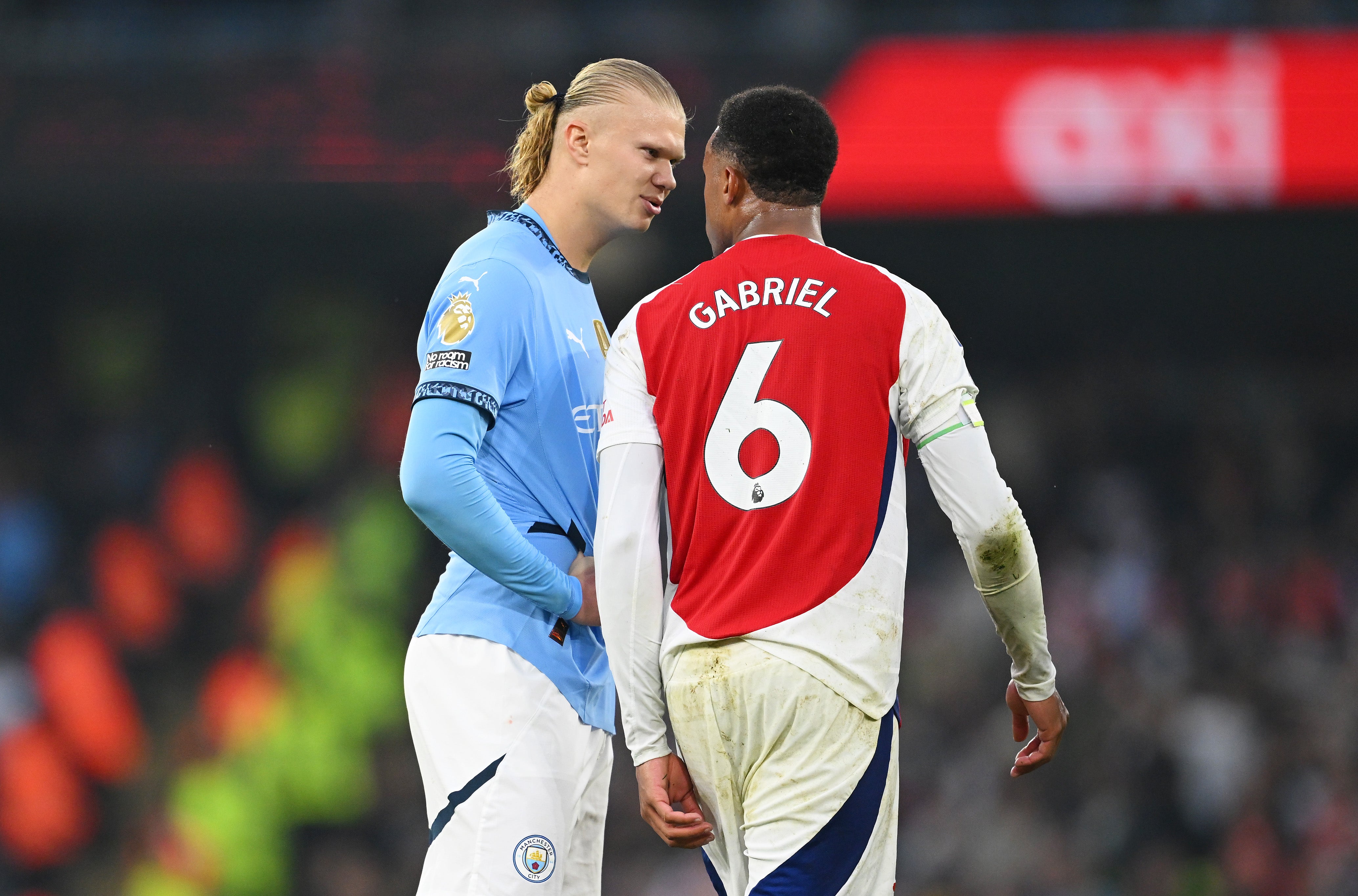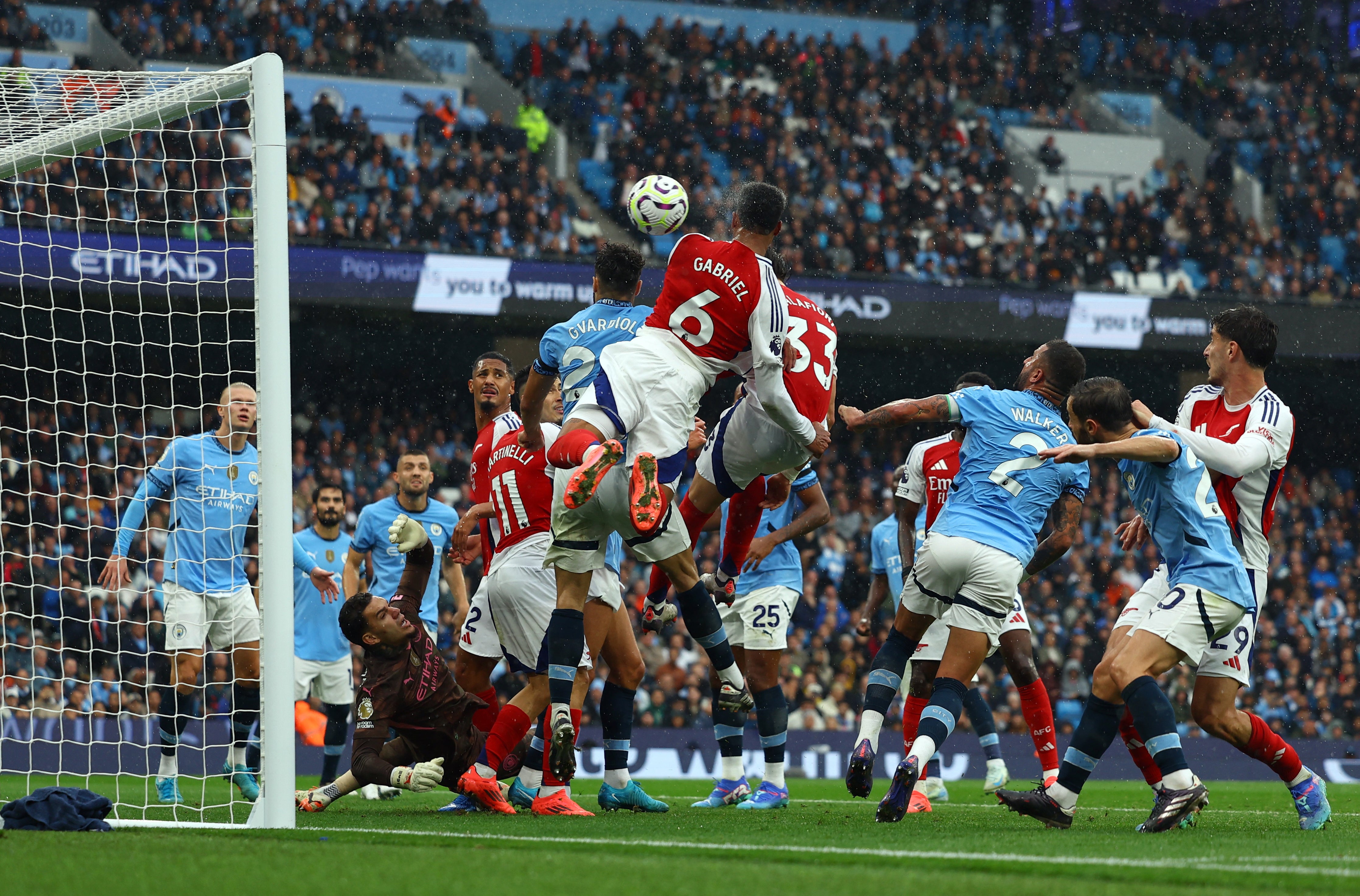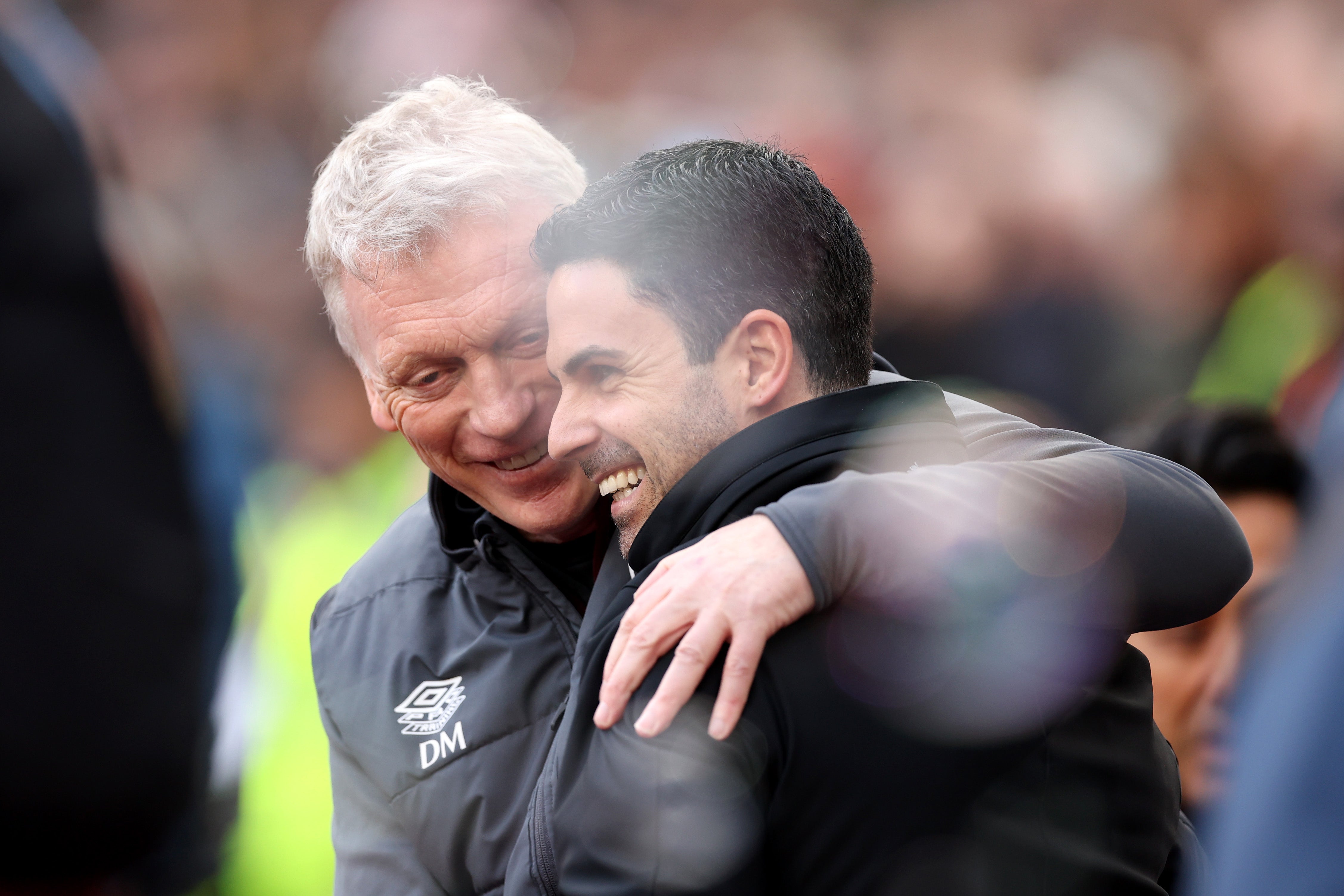Mikel Arteta’s true inspiration isn’t Guardiola or Wenger – it’s David Moyes
Arteta has transformed the soft Arsenal side he inherited into the imposing, streetwise Gunners getting under the skin of serial champions Manchester City

Your support helps us to tell the story
From reproductive rights to climate change to Big Tech, The Independent is on the ground when the story is developing. Whether it's investigating the financials of Elon Musk's pro-Trump PAC or producing our latest documentary, 'The A Word', which shines a light on the American women fighting for reproductive rights, we know how important it is to parse out the facts from the messaging.
At such a critical moment in US history, we need reporters on the ground. Your donation allows us to keep sending journalists to speak to both sides of the story.
The Independent is trusted by Americans across the entire political spectrum. And unlike many other quality news outlets, we choose not to lock Americans out of our reporting and analysis with paywalls. We believe quality journalism should be available to everyone, paid for by those who can afford it.
Your support makes all the difference.When Jurrien Timber’s number was up, he had played for 91 minutes and played well. What he had not done, at any stage in those 91 minutes, was to pass the ball to a teammate. Likewise when the final whistle blew, Kai Havertz had completed the entire match without completing a single pass.
The German’s role was instructive. He had started off as Arsenal’s lone forward and spent the second half as a right winger in a striker-less formation. He made five clearances and won five headers: perhaps that aerial ability was why Mikel Arteta instead sacrificed Bukayo Saka after Leandro Trossard was sent off.
And arguably Havertz had set the tone for Arsenal’s 2-2 draw at Manchester City, flattening Rodri after a few seconds (though, it should be said, with less force than Erling Haaland deployed when he careered into William Saliba a few minutes later). Both sides sought physical contact as well as an advantage in the title race. If neither ultimately gained one, Arsenal demonstrated they were more interested in winning the Premier League than making friends.

Certainly City felt riled, whether by time-wasting, the impudence of challengers or the sense that they are in danger of being usurped. A fractious Haaland asked the 17-year-old Myles Lewis-Skelly: “Who the f*** are you?” It was not a polite inquiry. An unusually outspoken Bernardo Silva accused Arsenal of not coming to the Etihad Stadium to play football and drawing a contrast with Jurgen Klopp’s Liverpool who, he felt, always set out to win. Manuel Akanji pondered if Arsenal are the best at the dark arts in Europe. “I don’t think there are many better than them at it,” said the City defender.
There is an obvious riposte: if Arsenal have mastered the dark arts, which supposedly require industrial quantities of cunning, why was Leandro Trossard stupid enough to be sent off for kicking the ball away, two league games after Declan Rice suffered the same fate? A 2-2 draw denied Arsenal the vindication of victory, but theirs was more a defensive exhibition than a Machiavellian masterclass.
One interpretation is that time-wasting backfired. While Trossard was dismissed deep in first stoppage time, that was applied largely because of the two times Rodri was injured. But John Stones’ 98th-minute equaliser reflected the amount of time added on; and, in turn, the time Arsenal had used up. Lewis-Skelly’s debut had the curiosity that he was booked 25 minutes before coming on for his remonstrations on the touchline.
If time-wasting, like beauty, is in the eye of the beholder, Arsenal have bemoaned it before. Indeed, their meetings with Newcastle tend to be notable for one side accusing the other of time-wasting. Porto certainly irritated Arsenal in the Champions League double-header earlier this year. “There are clubs that have that in their DNA,” Arteta said then. “It is not something that you would directly link with Arsenal, that's for sure, but it is something that has to be developed.”

And Arsenal now seem to have very different DNA. They are fishing in different gene pools. Pep Guardiola has noted how the Gunners have more sizeable figures than his side. Of those players left on the pitch after Saka went off, only Gabriel Martinelli and Timber were under 6ft. There was a time when Arsene Wenger replaced the ageing colossuses of his best team with diminutive technicians.
Arteta’s Arsenal are a bigger team; more streetwise and battle-hardened, too. The Arsenal of cliché were soft touches; there were points in the 2021-22 season when an emerging team seemed to have a fragility. If Arteta’s response was to import winners from City, in Gabriel Jesus and Oleksandr Zinchenko, now neither is in his strongest side. But he has looked to bulk up, allying physical power with combative characters: Gabriel Magalhaes is both in a giant package.
A diet of clean sheets, set-pieces and us-against-the-world mentality can feel a throwback to the George Graham era. There is a team ethic: Havertz, with his selfless running, is an emblematic figure. Rewind to Arteta’s appointment in 2019 and Arsenal’s biggest names and biggest earners were Mesut Ozil and Pierre-Emerick Aubameyang. He exiled both; it is hard to imagine either playing they way Havertz did on Sunday.
Normally Arsenal defend from the front. As they played 5-4-0 in the second half at the Etihad, there was no front. But there was a superb defence; breached only three times this season, only by Haaland when Arsenal still had a full complement of players. Arsenal may have the best defence in Europe. Certainly they look the antithesis of the late Arsene Wenger sides: last season was the first since the Invincibles campaign of 2003-04 when they conceded fewer than 30 league goals.

When Arteta arrived, the two obvious influences to examine were Wenger and Guardiola: he captained the Frenchman for Arsenal, assisted the Spaniard at City. Yet as Arsenal evolve into a formidably pragmatic side, it can appear he took more from his time under David Moyes at Everton. Moyes could play versions of 4-5-1 or use centre-backs at full-back. Moyes liked a defensive midfielder. Arteta signed Moyes’ best defensive midfielder in Declan Rice. The Spaniard, however, may take the Scot’s ideas to new heights.
And while Sunday was neither the battle of the Etihad nor, for all the rancour, a particularly brutal affair, the numbers show the shift in Arteta’s Arsenal: away from late-era Wenger teams, away from Guardiola’s City. Arsenal have had the most yellow cards in the Premier League (19) and have committed twice as many fouls as City this season (65-32). They have had the fourth lowest share of possession (41.6 percent), even if that is influenced by the time spent playing with 10 men. They have been outscored by Tottenham, but not when they played Spurs.
The niggle and needle is part of Arsenal’s bid to be the most difficult team to face. But, even if it can feel the most visible part, probably only actually a small bit of it.



Join our commenting forum
Join thought-provoking conversations, follow other Independent readers and see their replies
Comments